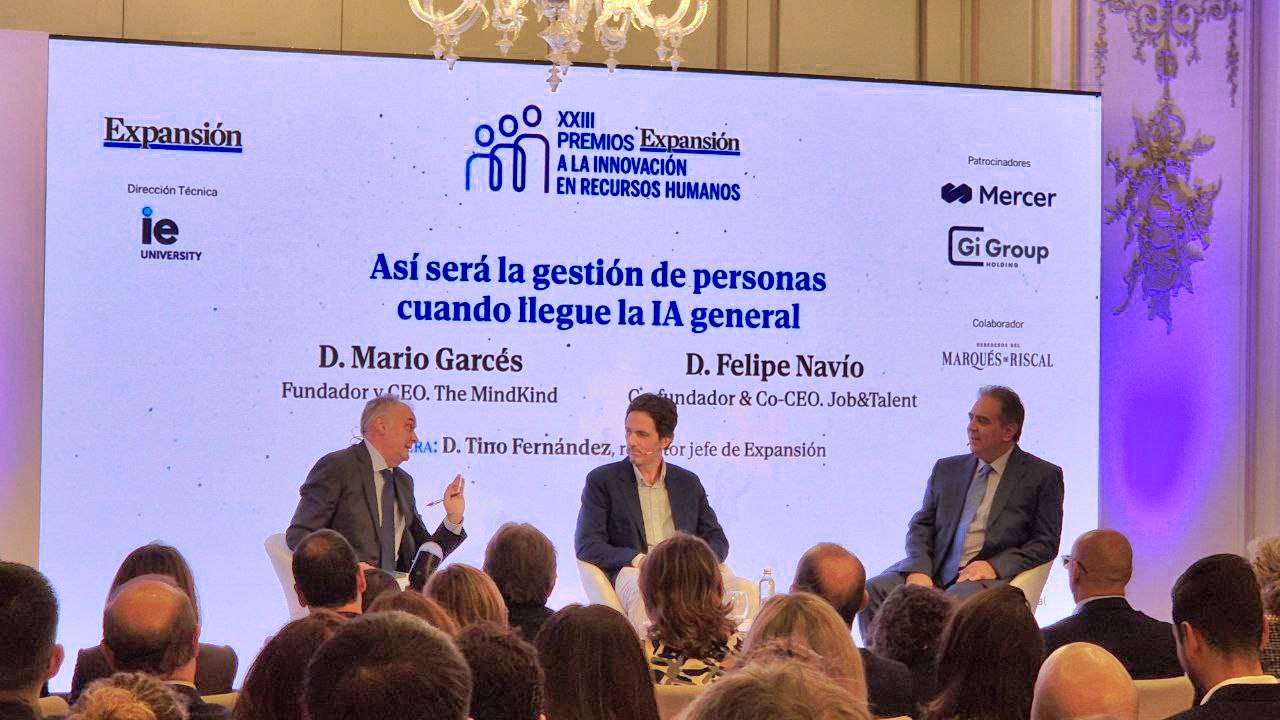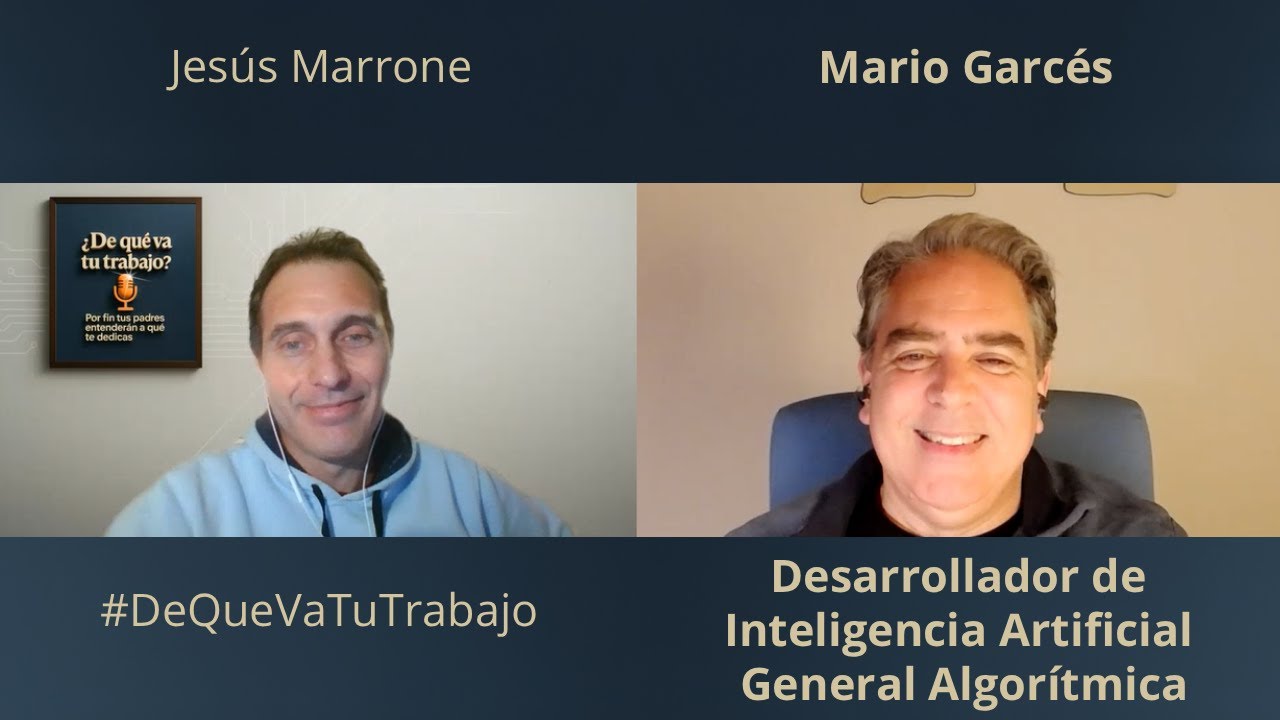Imagine a video game character who carries his own life inside him, capable of learning, reasoning, making decisions..., so similar to a human being that not even you can distinguish if he really is one or not . The Huesca company The Mindkind, in collaboration with Itainnova , develops the 'software' that will make that character, a robot or a mobile phone, behave like a person.
"We want to make a GPT Chat, but one that walks, talks and moves through virtual worlds, and at a much smaller computational cost . " This is how Rafael del Hoyo, head of the Artificial Intelligence and Cognitive Systems research line at Itainnova, summarizes what the Sirius project that they are developing together with the Aragonese company The Mindkind aims to achieve.
Sirius is the brightest star in the sky and the project that bears its name consists of developing Artificial General Intelligence or AGI technology , that is, explains Mario Garcés, director of this company located in Castejón de Sos (Huesca), "allowing "a machine acquires the ability to learn, reason, generate alternatives, make decisions and behave like a human." The objective is, Del Hoyo adds, "to make tools with learning capabilities that are closer to human beings and that know how to do several things at the same time."
So close to us that it is difficult, or impossible, to distinguish between a machine and a human being.
Being a transversal technology, this 'software' can be incorporated into all types of devices that receive information and have the capacity to act: from robots to mobile phones, through chatbots, virtual avatars or video game characters. "The latter are our first target market, due to ease, economy and speed," says Mario Garcés.
"These characters or avatars will have their motivations and will set their own objectives, which we will outline on a 'psychological' level so that they collaborate or compete with the players"
Autonomous avatars and Non-Playable-Characters or NPCs are virtual characters that 'live' within a virtual environment or video game."in which, currently," Garcés describes, "they carry out routines pre-programmed by the designers, with a low level of realism." "With our ETR technology, these virtual characters will have their own life, which will be real for them, as happens in the Disney movie 'Free Guy', where the protagonist does not know that he is an NPC, because he has his own 'consciousness'. So , these characters or avatars will have their motivations and will set their own objectives, which we will outline on a 'psychological' level so that they collaborate or compete with the players." In fact, The Mindkind already integrates psychologists on its staff, along with neuroscientists, developers, AI experts and virtual reality programmers. This year, they plan to grow from six to eleven people.
Are you real?
The first version of The Mindkind software focuses on video games. "We want to turn a video game like a movie," says Del Hoyo, "in which we design the actors with whom the protagonist - who is the player - will speak, the only thing is that he will not know if they are real people or models generated by we".
In the competitive video game market, one of the largest industries in the world, moving billions, "if we introduce virtual people into the video game who have different roles, it will improve quality and player satisfaction, making it possible to tell deeper stories." and more interactive," says the Itainnova artificial intelligence expert. He is convinced that, going one step further, "when the metaverse exists, we will fill it with virtual sentient beings."
"Imagine if we could command robots with our same capabilities, but that did not need human control or food (they could use solar energy), that could solve problems autonomously and explore Mars"
But these new computer systems capable of learning, reasoning, making decisions and behaving as if they were humans do not only look towards the world of video games. The director of the Huesca start-up gives the new space race as an example . "Right now, sending humans into space is still very risky, expensive and technically difficult . Imagine if we could send robots with our same capabilities, but that did not need human control or food (they could use solar energy), that could solve problems autonomously and explore Mars, carrying out all kinds of tasks prior to the arrival of humans. The technology we are trying to develop will make that possible," he says.
And combined with the metaverse, which will be "a virtual space where we can simulate all types of realities, in a simple and economical way", before sending this robot to explore Mars, tests could be carried out and it could be trained in a simulation of the Martian environment with its digital twin. . "That is the metaverse," he anticipates, "where avatars managed by humans and others driven by general AI will be able to coexist and interact without being able to distinguish one from the other."
A 'software' that learns through emotions
For a few months now, artificial intelligence has crept into many everyday conversations, following presentations made by companies such as OpenAI or Microsoft . Itainnova has been working on the concept of general artificial intelligence for more than 10 years and with The Mindkind, the last two years, "trying to unravel together the secrets of the human mind to turn them into technology ," says Mario Garcés, director of the 'start up'. Because "what began as research in neuroscience has become the development of a cognitive architecture that we call ETR, and which is the basis of our technology", developed in collaboration with Itainnova.
With funding from CDTI, they started the Sirius project, whose objective is to develop a behavioral engine for general artificial intelligence. What does it consist of? Garcés explains that it is "a software component that, integrated within an artificial system, allows that system to display capabilities similar to those that humans have, to the point that you do not know if you are interacting with a human or with a machine". This engine can be integrated with all types of electronic systems, from robots to mobile phones, virtual reality or video games. The engine "is responsible for processing the input information and deciding the appropriate response. Depending on the device, the inputs and responses will vary, and will not be the same for a mobile phone as for an autonomous car.""A brain (an algorithm) like that of a human being, that serves not only to chat, but also to walk, recognize images, move and interact with things, learning in the same way that humans do, trial and error ", details Rafael del Hoyo from Itainnova.
It is a step towards general AI. "The current AI, which is talked about daily in the media, is known as narrow AI. To use an analogy," says Garcés, "it would be like the 'reflexes' that living beings have, very useful to avoid, for example, , that something hits us, but nothing more. What we are developing would be the equivalent of the 'cognitive' capacities of living beings and, ultimately, humans. These capacities will allow us to understand the world in a much more adaptive way than current AI."
"The objective is to make software that learns through emotions, that understands, like people, that if you do the right things that allow you to achieve objectives, the emotional gain makes you learn it"
A human learns through trial and error, by achieving goals, by small rewards that make us happy. "The objective - Del Hoyo completes - is to make software that learns through emotions , that understands, like people, that if you do the right things that allow you to achieve objectives, the emotional gain makes you learn it." ".
And how do we avoid biases , so human? "The curious thing is that they are not avoided, because we want the machine to be like a human," answers Garcés. "What we can do is know how, when and why they occur and correct them, something that is impossible right now with AI." narrow".

















